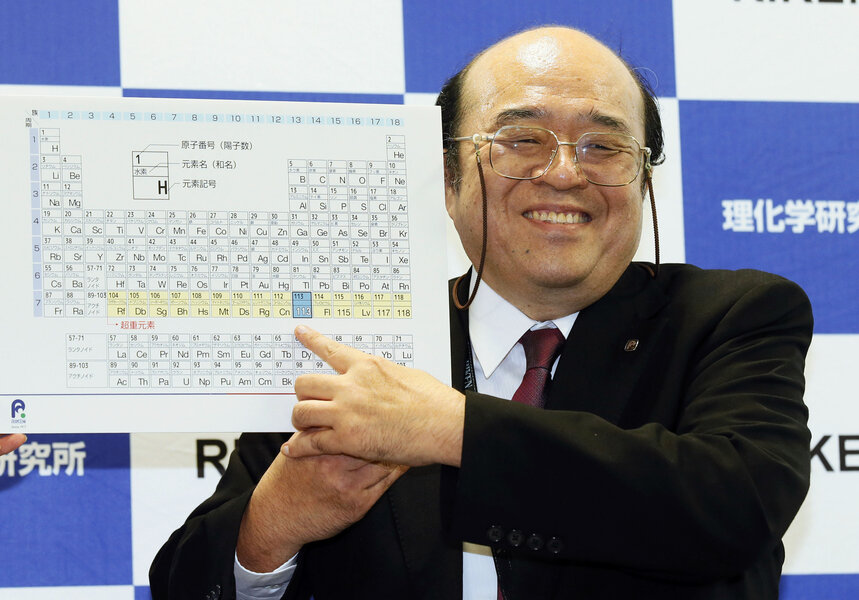Make room Copernicium, there's a new heavy metal band on the periodic table
Loading...
Nihonium (Nh), moscovium (Mc), tennessine (Ts), and oganesson (Og): Welcome to the periodic table.
The International Union of Pure and Applied Chemistry (IUPAC) approved the names and symbols for four new elements earlier this week. After verifying their discovery last December, the IUPAC suggested names for these four elements in June, pending a five-month review period for public comment.
Nh, Mc, Ts, and Og – officially designated as elements 113, 115, 117, and 118, respectively – will complete the seventh period (or row) on the table, making them some of the heaviest metals on the table. These elements are synthetic, or man-made, and they only exist for fractions of a second in a lab before breaking apart into other elements.
These are the first elements added to the centuries-old periodic table since 2011, when heavy metal band members livermorium (element 116) and flerovium (element 114) were added to the table. Adding new names to the table is not something scientists – or the general public – take lightly, as the five-month process suggests.
“Overall, it was a real pleasure to realize that so many people are interested in the naming of the new elements, including high-school students, making essays about possible names and telling how proud they were to have been able to participate in the discussions,” said Jan Reedijk, president of the Inorganic Chemistry Division at IUPAC, in a press release. “It is a long process from initial discovery to the final naming, and IUPAC is thankful for the cooperation of everyone involved.”
However, the naming process is not entirely open to the public.
Although numerous comments and petitions were received, the suggestions “could not be accepted,” IUPAC explains, because only the elements' discoverers “have the right to propose names and symbols.”
The four new elements follow IUPAC’s guidelines, which dictate that all elements be named after a place, scientist, property, mineral, or mythological concept. Oganesson honors Armenian nuclear physicist and element hunter Yuri Oganessian, who is also known as “the grandfather of superheavy elements.”
Nihonium, moscovium, and tennessine are all named for the locations where they were discovered: Japan (Nihon is a way to say Japan in Japanese), Moscow, and the US state of Tennessee.
“It used to be that when a discovery was made, when you thought you had one, you named it something,” Janan Hayes, professor emeritus at Merced College in California and former chair of the American Chemical Society’s Division of History of Chemistry, told The Christian Science Monitor’s Lisa Suhay. “But this was very confusing because you could end up with three or four names for an element as three or four different groups or laboratories claimed discovery. What makes the naming important internationally is that the name is accepted internationally.”
And considering that new elements come along so infrequently, it makes sense that chemists take their naming seriously.
“Biologists get to do all those sorts of things, more whimsical namings, because they have so much more to work with,” added Dr. Hayes. “In chemistry, we have so little that we really need to put deeper thought into it every time.”








